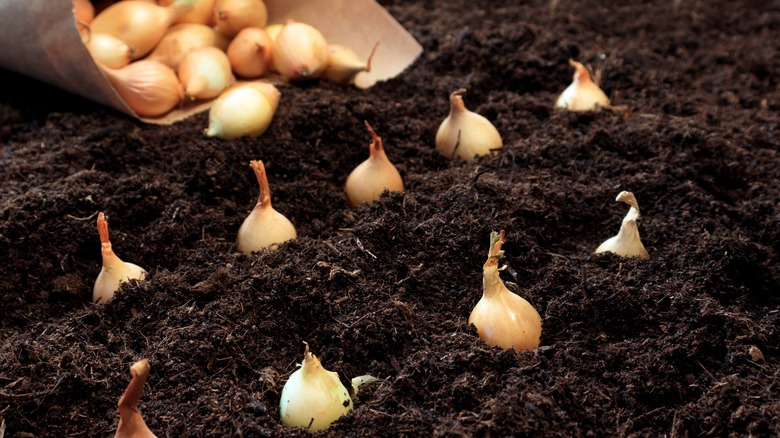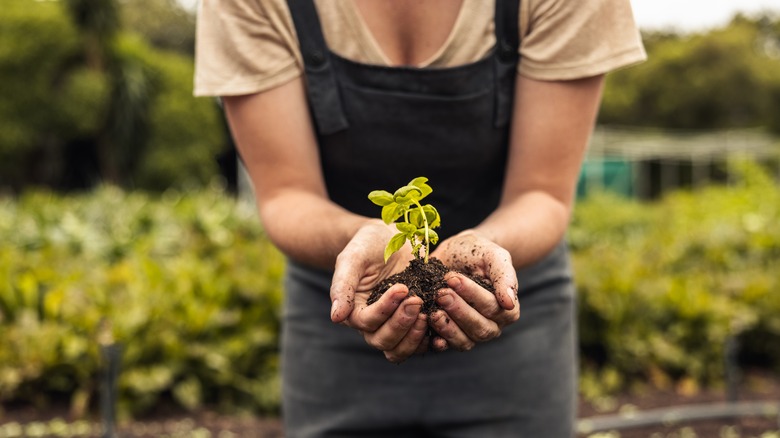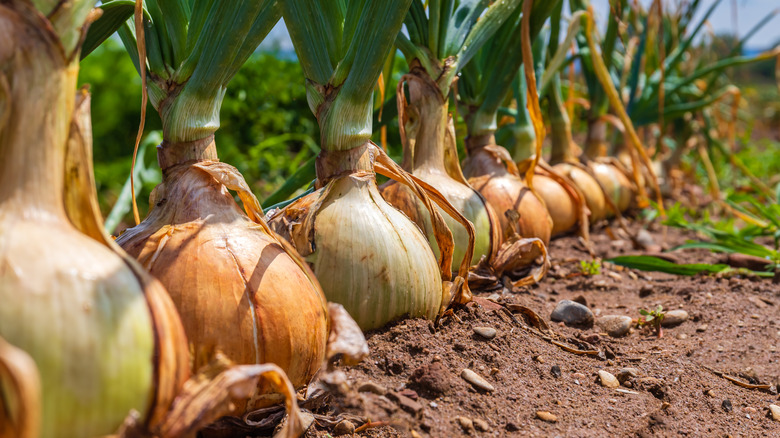How To Easily Transplant Onion Seedlings Outside And Keep Them From Falling Over
Onions form the base of hundreds of different dishes and are commonly used in cuisine from all around the world, so, if you're looking to incorporate a new crop into your home garden, onions are a great, easy-to-use choice. If you're planning to grow your own onions, you have two options: growing from sets or growing from seeds. Onion sets are smaller, immature bulbs that can be transported directly into your garden, while onion seeds are exactly what you'd expect — seeds that you take all the way from germination to harvest.
While onion sets are the more convenient choice, growing from the seed is often cheaper and can produce a larger final crop. If you plan to grow onions from the seed, however, you need to know when it's time to transfer your seedlings and how to give them the proper treatment they need to survive outdoors once you've allowed them to germinate. This takes a bit of extra time and effort, but in a few months, you're sure to reap the benefits.
When to transplant onion seedlings
The process of growing your onion seeds should begin indoors, either in a greenhouse or inside your home, around mid-winter. The space should be kept at around 70 degrees Fahrenheit to ensure the seeds germinate properly, then the plants need to be exposed to either a natural or artificial light source once the seedlings begin to grow leaves.
As with any other germination, this takes some patience. Everything depends on the temperature of your growing environment and the light your seedlings are exposed to, but it'll likely take anywhere from a month and a half to two months for your seedlings to reach the proper size to be transplanted. Once the onion seedlings grow to about 6-8 inches and have three leaves, you can prepare to bring them outdoors. By this point, the weather outside should be warming up, meaning you won't have to contend with any extreme freezes or hard soil while you're planting.
How to keep them from falling over too soon
Once your seedlings have reached the proper size and your garden is thawed and ready to be tilled, you can get to work on transplantation. According to the University of Arkansas Division of Agriculture, you should plant your onions with 12 to 15 inches between rows and 4 to 5 inches between plants to achieve the maximum bulb size. Planting your seedlings too close together can result in smaller onions when it comes time to harvest. Further, when you plant your seedlings, take care not to cover up any of the leaves — especially new growth. As for the depth in the soil, you should create a hole about 1 inch deep, just enough to stabilize the plant so that it doesn't tip over.
Throughout the growing season, it's important to clear away any weeds and grasses that could pull nutrients from the soil. Once a few of the tops have naturally fallen over, your onions should be ready to harvest, usually around late spring or early summer. Leave them in a dry, well-ventilated location to cure for a few weeks; once done, you'll be ready to enjoy the results of your hard work.


